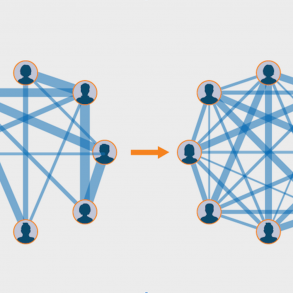By Emmanuellle Abensur and published as one article at holaspirit.com
This is Part 1 of a 3-part article. Part 1 covers all-in-one tools.
Part 2 is here, covering collaboration and documentation tools, and data visualization tools.
Part 3 is here, covering project management and OKR tools, and meeting management tools.
In this article, we’ve compiled a list of the 14 best self-management tools that are either all-in-one or best-of-breed solutions (i.e, tools that are specialized in certain areas).
.jpg)
Implementing self-management is a great way to foster a sense of ownership, empowerment and accountability among teams. However, you need to have the right tools to reap those benefits.
Fear not: we’ve got you covered! Whether you’re looking to practice holacracy, sociocracy, teal or scrum methodologies, there are several self-management tools that will help you do just that!
In this article, we’ve compiled a list of the 14 best self-management tools that are either all-in-one or best-of-breed solutions (i.e, tools that are specialized in certain areas). Let’s get started!
All-in-one self-management tools
First things first, let’s get a look at all-in-one self-management tools. These are probably the most practical you can get, since they incorporate all the features that self-managed organizations need, such as meeting templates, role mapping, project management and process documentation.
1. Holaspirit
Holaspirit is a self-management platform that improves transparency, agility and performance within organizations of all sizes.
Our solution helps you document roles, responsibilities and processes, to make sure that your employees have the information they need to do their jobs and make decisions on their own. With Holaspirit, you can practice sociocracy, holacracy, teal, scrum and lean methodologies, and many more.

- dynamic organizational chart to map circles and roles, as well as the responsibilities, accountabilities, skills and metrics associated with each role
- OKR (objective and key results) module that helps you align your company’s and teams’ goals
- templates and automated reports for governance and tactical meetings
- co-editable publications to document team processes and company policies
- possibility for members to make proposals and process tensions using the principles of consent-based or integrative decision-making
- comprehensive tasks feature to help you organize your project with kanban boards, view your assigned tasks and check if specific deadlines are met
- tracking of the time spent in each role
Strengths:
- user-friendly and intuitive interface for both users and administrators
- many customization options for creating your organization’s structure (role templates, customized fields, activation and deactivation of apps, etc.)
- adapted to all self-management frameworks and decision-making processes
- translation add-on that automatically translates your organization’s roles and circles
- platform hosted in the European Union and ISO 27001 certified
Weaknesses:
- mobile app with limited capabilities
- it can take a bit of time to deploy the tool and get everyone onboard with the new working methodology
Pricing: starting at €2/user/month + platform access fee of €79/month.
Freemium plan and free trial available. Check out all our plans here.
➡️ Want to know more? Contact our sales team to get an overview of our platform 👇
2. Glassfrog
Glassfrog is a platform that helps organizations level up their self-management and agile practices. Among all-in-one self-management tools, this one is particularly adapted for teams that want to practice holacracy by the book, and create more transparency through clear roles, policies and rules.

Key features:
- organizational chart that helps you define roles and responsibilities
- governance and tactical meeting templates
- possibility to create tensions and import them into a meeting
- features to define goals, check-lists and metrics for your team
Strengths:
- feature that allows you to create and visualize your organization’s rules
- role templates to facilitate the creation and allocation of roles
- possibility to enroll members into an automated holacracy program
- integration of Slack, Asana and Jira
Weaknesses:
- tool mostly adapted to holacracy, and not so much to other self-management frameworks such as sociocracy or teal
- lack of flexibility and customization for organizations that don’t necessarily want to practice holacracy “by the book”
- not very user-friendly and intuitive to use
- very limited project management feature (no kanban view, no deadlines, no description, no assignments, etc.)
- no OKR tree to clearly visualize your company’s and teams’ goals
- mobile app with limited capabilities
Pricing: starting at $6/user/month. Free plan available with limited features.
3. Peerdom
Peerdom is a self-management tool that helps you get a clearer picture of your company’s structure and eliminate silos between teams. It’s mainly used as an organizational chart software, but it also allows you to activate additional features for project management, documentation, and so on.

Key features:
- mapping of your organization’s circles and roles, and description of each role’s responsibilities and purpose
- possibility to hold elections in order to choose a role holder
- definition of strategic goals using KPI and OKR frameworks
- tracking of time engagement per role
- network app that allows you to invite another organization on Peerdom
- pages app for capturing notes
Strengths:
- journal feature that allows you to see all new activities across your organization
- draft feature that lets you map out your organization in a protected space, and publish it only when it’s ready
- possibility to send or request feedback from your peers
- possibility to add your personal mission statements on the tool
Weaknesses:
- pricing can get expensive if you want to activate different features (and not just the organizational chart)
- no feature for running meetings
- limited project management feature (no kanban or list view, no tasks or sub-task, no associated metrics, etc.)
- no effective way to document processes and policies
- no feature for discussing tensions or submitting proposals
- no mobile app
Pricing: starting at €5/user/month




